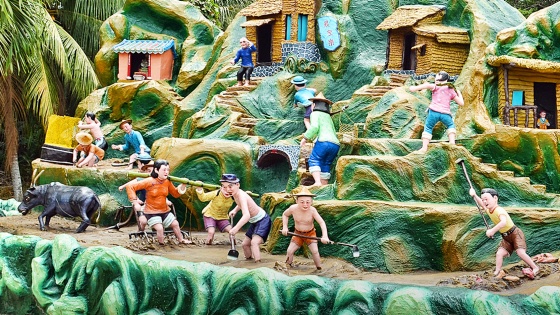Haw Par Villa
Haw Par Villa
Blog Article

Overview
Haw Par Villa, generally known as Tiger Balm Gardens, is undoubtedly an legendary theme park located in Singapore. This one of a kind attraction provides website visitors a glimpse into Chinese mythology and folklore through its beautiful and intricate statues, dioramas, and reveals. Let us acquire a better look at the important factors of this intriguing spot.
Record:
Haw Par Villa was initially built by Aw Boon Haw, the magnate powering the renowned Tiger Balm ointment. The park opened its doors in 1937 as a way to the two entertain and educate folks about standard Chinese values, historical past, and beliefs. All through the several years, it's gone through numerous renovations but has managed to retain its authentic charm.
Mythological Figures:
One of many primary highlights of Haw Par Villa is its huge collection of statues depicting people from Chinese mythology and legends. Readers will come upon figures like Journey to your West's Sunshine Wukong (the Monkey King), Eight Immortals from Daoism, in addition to essential deities such as Guanyin (Goddess of Mercy) and Buddha Shakyamuni.
Topic Parks within just Haw Par Villa:
In Haw Par Villa by itself are numerous distinctive parts or sections:
Ten Courts of Hell: Maybe Probably the most intriguing parts of Haw Par Villa is Checking out "The 10 Courts of Hell." Below website visitors can witness graphic scenes depicting punishments for numerous sins based on common Chinese beliefs about afterlife retributions.
Taoist-Mythology Sculptures: This spot showcases breathtaking sculptures depicting tales from historical Taoist myths. These vivid artworks carry to lifestyle tales that were passed down through generations in vivid depth.
Garden Sceneries: Further than mythological sculptures lie serene gardens full of picturesque landscapes adorned with beautiful flowers and crops—an excellent space for website visitors to take it easy amidst nature's magnificence or take pleasure in an off-the-cuff stroll.
Teochew Opera Centre: The Teochew Opera Centre is a traditional theater placing that frequently hosts performances of your Teochew opera, a substantial method of Chinese musical drama with distinctive regional qualities in its costumes, new music, and storytelling.
Cultural Significance:
Haw Par Villa holds huge cultural importance as it provides a chance to explore different components of Chinese culture, folklore, and religious beliefs. It serves as both equally an open-air museum as well as a spot for communal activities like festivals or educational packages enabling readers to gain insights into historical Chinese traditions.
On top of that, the park's original intention was to educate website visitors about here ethical values as a result of vivid depictions of heaven and hell – rewarding virtue and condemning vices. As a result Haw Par Villa functions as don't just an amusement park but also a moral manual educating critical moral concepts from classic Chinese philosophy.
Modern day Relevance:
Inspite of being constructed decades ago, Haw Par Villa continues to appeal to locals and visitors alike resulting from its uniqueness and timeless enchantment. The park has managed to Mix custom with modern day things by Arranging functions for instance artwork exhibitions, lantern festivals for the duration of mid-autumn celebrations showcasing the fusion involving modern-day aesthetics and common themes connected to the villa.
Lately, there are already attempts by authorities to refurbish elements of the attraction whilst ensuring its historic authenticity. This ongoing servicing makes sure that Haw Par Villa remains accessible for generations to return when preserving its prosperous heritage worth.
Conclusion:
Haw Par Villa stands out among the Singapore's points of interest for its immersive expertise into mythical realms as a result of intricately-intended sculptures depicting deities, legends, morality tales and punishments in Taoist mythology-motivated gardenscapes - all inside of a reflective natural environment emphasizing daily life lessons dependant on compassion demonstrated in the direction of others because it conveys ancient knowledge guided by ethical concepts conducive for self-enhancement located amidst attractive scenic landscapes making it acceptable equally for cultural exploration enthusiasts keen on China's large mythology/record/backgrounds/legends concurrently(proporotinately with due rverence toward central theme of representing traditional Chinese lifestyle and beliefs).